 As I have mentioned in other blog posts, the focus of my research has been on my maternal ancestry from Ireland, Germany, and Italy. While researching my Italian heritage, I have come across various places listed as my ancestors’ places of birth, from tiny frazioni (the equivalent of a parish) to various larger comuni (towns). To make researching my Italian ancestry harder is the fact that I am from the northern part of Italy, about 40 miles outside of Milan. Continue reading Snail mail
As I have mentioned in other blog posts, the focus of my research has been on my maternal ancestry from Ireland, Germany, and Italy. While researching my Italian heritage, I have come across various places listed as my ancestors’ places of birth, from tiny frazioni (the equivalent of a parish) to various larger comuni (towns). To make researching my Italian ancestry harder is the fact that I am from the northern part of Italy, about 40 miles outside of Milan. Continue reading Snail mail
All posts by Jason Amos
Volunteer appreciation
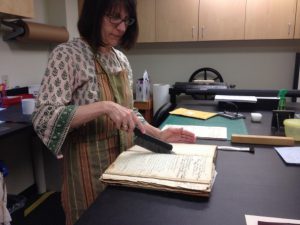
I started at NEHGS as a volunteer, coming in every Friday for about four hours. My first project involved checking the transcriptions of the names that other volunteers had made against other sources to help decipher some of the names. Often this involved me running up to the fifth floor, where the local histories are kept, or 7, where the genealogies are, to check spellings. After a few weeks I was familiar enough with the handwriting that I did not have to go use outside sources to verify the transcription. Not long afterwards, I began scanning a manuscript for Special Collections and then, as I was in library school at the time, working with actual collections and providing additional details for finding aids. Continue reading Volunteer appreciation
Getting the most out of a library visit
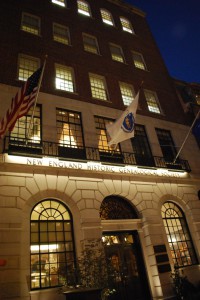 A few years ago, I was having dinner with some friends when I learned that one of them did not know what microfilm was. This conversation then turned to talking about why only some of us had heard of and used microfilm and others had never heard of it. As a new archivist (at the time), but a relatively seasoned researcher, I was shocked. It is conversations like that that remind me that not everyone knows why archives and libraries do the things that they do, which can seem intimidating. For someone visiting a repository for the first time, there are a few things that you should expect and can do ahead of time to maximize the amount of time you have available to look through material. Continue reading Getting the most out of a library visit
A few years ago, I was having dinner with some friends when I learned that one of them did not know what microfilm was. This conversation then turned to talking about why only some of us had heard of and used microfilm and others had never heard of it. As a new archivist (at the time), but a relatively seasoned researcher, I was shocked. It is conversations like that that remind me that not everyone knows why archives and libraries do the things that they do, which can seem intimidating. For someone visiting a repository for the first time, there are a few things that you should expect and can do ahead of time to maximize the amount of time you have available to look through material. Continue reading Getting the most out of a library visit
Arranging your family papers, part 3
[Editor’s note: This series began here and continued here.]
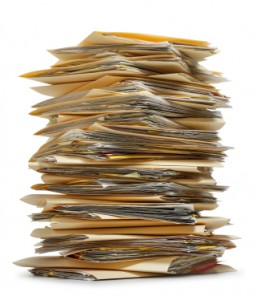 The last topic that I originally wanted to discuss in my article on organizing and preserving your family papers was digitization. For someone who wants to digitize their material there are a few things that you can do to have archival quality digital images.
The last topic that I originally wanted to discuss in my article on organizing and preserving your family papers was digitization. For someone who wants to digitize their material there are a few things that you can do to have archival quality digital images.
The first of thing to do is make sure that you have the necessary equipment for a digitization project. This would likely involve a flatbed scanner (your printer may have one) or a digital camera to photograph larger items. The disadvantage of using a camera is that if the item is large, you may not obtain a focused image and if you try to take the photograph by hand you may end up with a blurry picture. If you are photographing material, a tripod will help stabilize the camera. Continue reading Arranging your family papers, part 3
Arranging your family papers, part 2
[Editor’s note: This series began here.]
 When I begin organizing a collection, I start with a quick survey to help determine what types of material are in the collection. For me, this involves listing the formats in the collection, identifying the creators (if it is a collection of family papers), and the general years of the material. I also make note of any torn/damaged records, as I prefer to know about them before I start moving things around and possibly separate the pieces or completely tearing an item that only had a small tear because it snags on something. Continue reading Arranging your family papers, part 2
When I begin organizing a collection, I start with a quick survey to help determine what types of material are in the collection. For me, this involves listing the formats in the collection, identifying the creators (if it is a collection of family papers), and the general years of the material. I also make note of any torn/damaged records, as I prefer to know about them before I start moving things around and possibly separate the pieces or completely tearing an item that only had a small tear because it snags on something. Continue reading Arranging your family papers, part 2
Arranging your family papers
 While my article about arranging your family papers in the winter edition of American Ancestors was meant to provide readers with the sense that they could preserve their collections on their own, I thought it would be helpful to go back and provide information that had to be removed from earlier drafts, beginning with defining some of the archival terms that I used.
While my article about arranging your family papers in the winter edition of American Ancestors was meant to provide readers with the sense that they could preserve their collections on their own, I thought it would be helpful to go back and provide information that had to be removed from earlier drafts, beginning with defining some of the archival terms that I used.
The first word that I use is “record/s.” As genealogists, we are used to identifying a record by the purpose for which it was created, such as vital records or census records. The Society of American Archivists (SAA) lists multiple definitions of what an archival record is, but the basic definition that applies to family papers is: Continue reading Arranging your family papers
Real photos
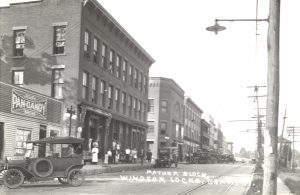 A few weeks ago, I went to one of the regular postcard shows that I frequent in the summer and came across a postcard that fills in a missing image in my family history. My entire postcard collection consists of images from Windsor Locks, Connecticut, where my Italian ancestors settled and lived for multiple generations. I have many of the mass-produced ones as well as some real photo postcards that show the flooding of the Connecticut River in 1936 and others showing houses that no longer stand. Continue reading Real photos
A few weeks ago, I went to one of the regular postcard shows that I frequent in the summer and came across a postcard that fills in a missing image in my family history. My entire postcard collection consists of images from Windsor Locks, Connecticut, where my Italian ancestors settled and lived for multiple generations. I have many of the mass-produced ones as well as some real photo postcards that show the flooding of the Connecticut River in 1936 and others showing houses that no longer stand. Continue reading Real photos
Tradition as deceiver
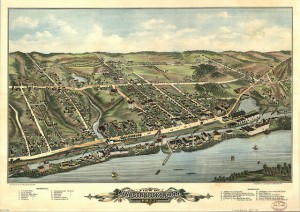
I was recently searching The American Genealogist for information and found an article titled “Tradition and Family History.”[1] The article’s opening lines are: “Tradition is a chronic deceiver, and those who put faith in it are self deceivers. This is not to say that tradition is invariably false. Sometimes a modicum of fact lies almost hidden at its base.” As a researcher, I have done quite a few cases that involve family traditions, and the article made me think about some of the stories that I have been told about my family. Continue reading Tradition as deceiver
Taking the long view
 As a researcher, I most enjoy looking through collections of personal papers. For me, seeing what items still exist is just as interesting as finding the data they contain. I have gone through family papers that I was told were “junk” and found information that I would have never found elsewhere, and which only exists because someone thought it was important enough to keep. It was when pondering my family papers and the records I create in my own research that I began to think about future genealogists. Continue reading Taking the long view
As a researcher, I most enjoy looking through collections of personal papers. For me, seeing what items still exist is just as interesting as finding the data they contain. I have gone through family papers that I was told were “junk” and found information that I would have never found elsewhere, and which only exists because someone thought it was important enough to keep. It was when pondering my family papers and the records I create in my own research that I began to think about future genealogists. Continue reading Taking the long view
Adding context to my genealogy
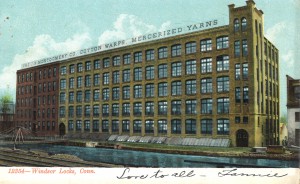
I could easily go up to the seventh floor here at NEHGS and find a lot of my ancestry in published genealogies, but my research interests have gone in a different direction: I have spent close to the last six years researching the branches of my Italian family in Windsor Locks, Connecticut, and writing a genealogy that traces all of the descendants of the earliest generation. Continue reading Adding context to my genealogy